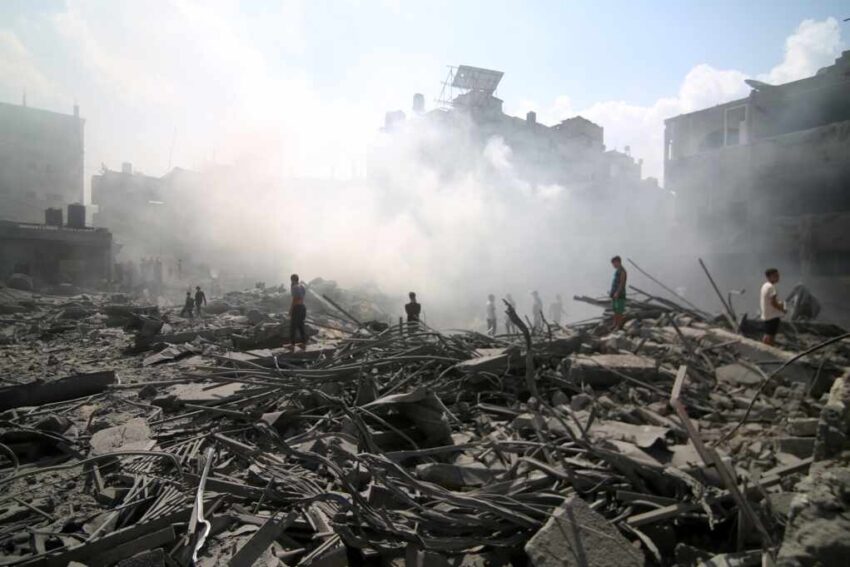When tunnels become the battleground in the Israel-Palestine conflict, who stands on the moral high ground?
At a Glance
- The IDF reported finding a tunnel under the European Gaza Hospital, sparking controversy.
- Key Hamas figures, including Mohammed Sinwar, were discovered there, raising questions on military tactics.
- Media discourse reflects divergent narratives, with Israel citing self-defense and Palestinians accusing aggression.
- The U.N. warns of the increasing humanitarian crisis in Gaza as the conflict continues.
Unveiling the Tunnel
The spotlight once again shines on the Gaza Strip as the Israeli Defense Forces (IDF) release footage of an underground tunnel network beneath the European Gaza Hospital. The tunnel, described as a major Hamas command and control center, lies directly beneath the hospital’s emergency room. Key Hamas leader Mohammed Sinwar was reportedly found dead in this tunnel. The IDF invited foreign media to witness this underground labyrinth, underscoring Hamas’s controversial use of civilian sites for military operations.
The operation, intended to minimize damage to the hospital while targeting the tunnel, also led to the recovery of weapons, ammunition, and crucial intelligence documents. The Israeli army found not only the body of Sinwar but also that of Mohammad Shabana, a senior Hamas commander, along with other militants. DNA confirmed Sinwar’s identity, shedding light on Hamas’s operational strategies under civilian cover.
Media and Narrative
Media narratives play a substantial role in shaping public perception of the ongoing conflict. The New York Times initially cast doubt on the tunnel’s presence, only to confirm its existence later. The discovery becomes a “Rorschach test,” illustrating the divergent views between Israelis—seeing Hamas’s abuse of civilians—and Palestinians, who view Israel’s targeting as a blatant disregard for civilian life. Critics argue that mainstream media often lean toward Hamas’s perspective in these portrayals.
“This is another example of the cynical use by Hamas, using civilians as human shields, using civilian infrastructure, hospitals, again and again.” – Brigadier General Effie Defrin.
Hamas’s history of embedding military assets within civilian areas, including hospitals and United Nations facilities, is a well-documented tactic. However, this tactic places Israel in a tight spot, confronting moral and tactical dilemmas in its military engagements. The recent operations shine a spotlight on these complex issues, raising the stakes in both military strategies and international discourse.
Humanitarian Toll
The military maneuvers may have exposed Hamas’s strategic vulnerabilities, but they have also spurred a severe humanitarian crisis. With over 54,000 Palestinian deaths reported and the United Nations warning of impending famine risks, Gaza faces mounting struggles. While the IDF seeks to dismantle what they term “terror infrastructure,” they navigate the delicate balance of necessary action and humanitarian repercussions—a test of intentions and consequences.
“We found underneath the hospital, right under the emergency room, a compound of a few rooms. In one of them we found, we killed Mohammed Sinwar.” – Brigadier General Effie Defrin.
The conflict continues as narratives clash, with each side highlighting their perspective as the justified cause. As the international community watches, the balance of military necessity and humanitarian sensitivity underscores this multifaceted crisis within the heart of the Middle East.
Click this link for the original source of this article.
Author: Editor
This content is courtesy of, and owned and copyrighted by, https://republicanpost.net and its author. This content is made available by use of the public RSS feed offered by the host site and is used for educational purposes only. If you are the author or represent the host site and would like this content removed now and in the future, please contact USSANews.com using the email address in the Contact page found in the website menu.








